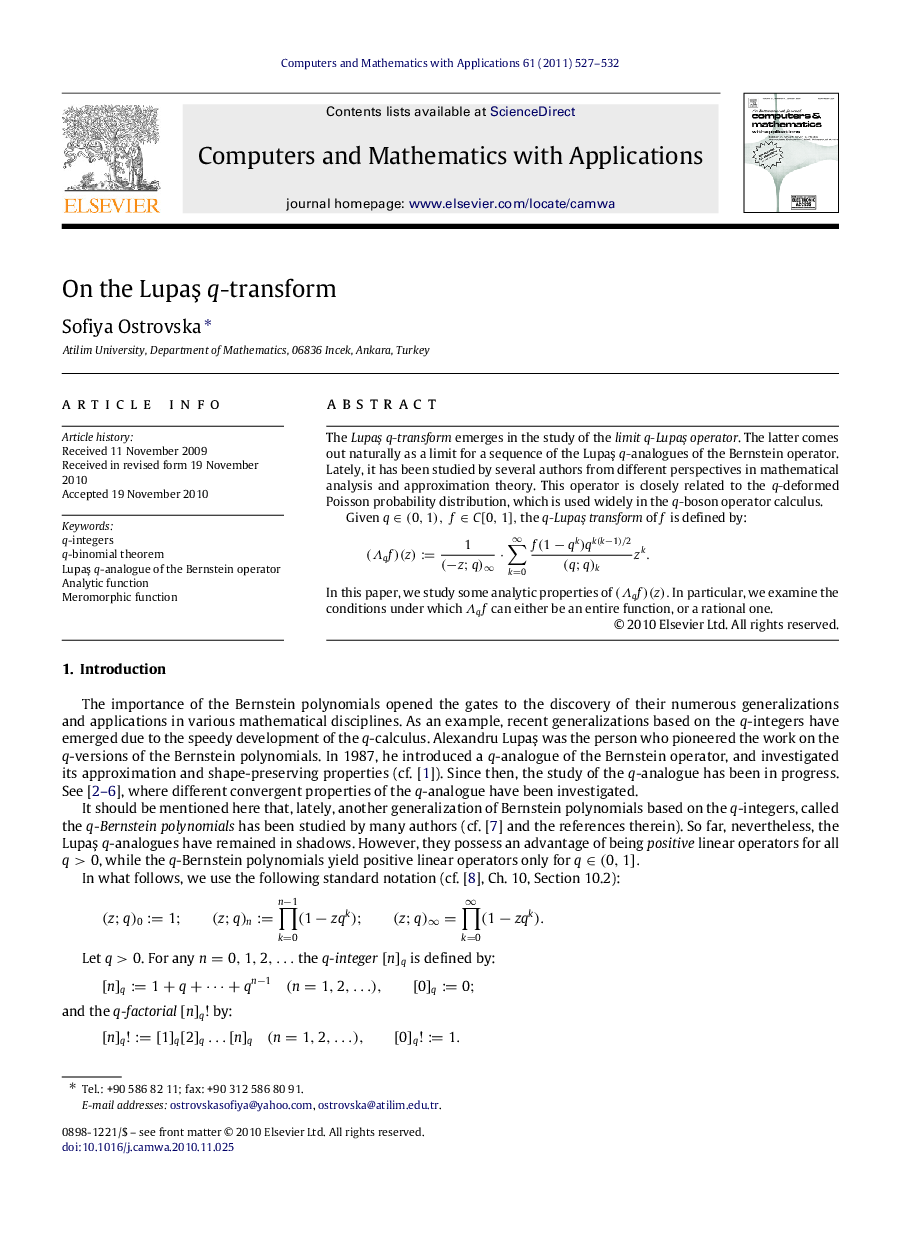| Article ID | Journal | Published Year | Pages | File Type |
|---|---|---|---|---|
| 470667 | Computers & Mathematics with Applications | 2011 | 6 Pages |
The Lupaş qq-transform emerges in the study of the limit q-Lupaş operator . The latter comes out naturally as a limit for a sequence of the Lupaş qq-analogues of the Bernstein operator. Lately, it has been studied by several authors from different perspectives in mathematical analysis and approximation theory. This operator is closely related to the qq-deformed Poisson probability distribution, which is used widely in the qq-boson operator calculus.Given q∈(0,1),f∈C[0,1], the q-Lupaş transform of ff is defined by: (Λqf)(z)≔1(−z;q)∞⋅∑k=0∞f(1−qk)qk(k−1)/2(q;q)kzk. In this paper, we study some analytic properties of (Λqf)(z)(Λqf)(z). In particular, we examine the conditions under which ΛqfΛqf can either be an entire function, or a rational one.
